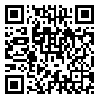Volume 2, Issue 2 (4-2010)
IJDO 2010, 2(2): 33-36 |
Back to browse issues page
Abstract: (17745 Views)
OBJECTIVE: Since bread is the main source of food in Iran, we aimed to assess the effect of four types of Iranian breads on metabolic and cardiovascular responses before and during 15, 30, 60, 90, 120 and 180 minutes of consumption in type 2 diabetic patients.
MATERIALS AND METHODS: Ten type 2 diabetic patients (6 women and 4 men) with mean age of 51 ± 9.8 years and mean BMI of 31.9 ± 1.19 kg/m2 who were taking oral antidiabetic agents (Sulfonylurea or/and Metformin) or an antidiabetic dietary regimen alone were recruited in this study. After obtaining informed consent, the subjects received 60 g (2 serving) one of the four types of traditional breads (Sangak, Taftoon, Barbari, Lavash) in four visits. Blood samples were collected before and 15, 30, 60, 120 and 180 minutes after beginning of eating. 24-hour dietary recalls were obtained at the first, middle and end of the study.
RESULTS: The mean of blood glucose after consumption of all types of breads differed significantly at 60, 90, 120 and 180 min. At 180 min after ingestion of Sangak (P = 0.023), Taftoon (P = 0.002) and Lavash (P = 0.000), a significant difference was observed compared with before ingestion. Result indicated that Barbari bread has the best effect on fasting blood glucose.
Conclusion: Our findings indicated that Barbari bread has the best effect on control of blood glucose and consumption of whole-grain breads (Sangak and Barbari) may reduce glucose excursion, improving glycemic control and as a supplementary means of diabetic therapy.
| Rights and permissions | |
 |
This work is licensed under a Creative Commons Attribution-NonCommercial 4.0 International License. |


